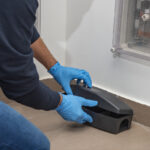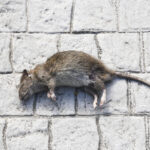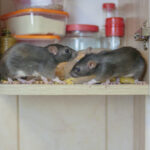Problems With Rats
In Low Hill?
Professional Rat Control In Low Hill
Need Help? Call Us On 0161 776 9832 For Expert Pest Control Advice On How To Identify Pest Infestations And Help Solve Your Pest Problem.
Youngs Pest Control
Need Help? Call Us On 0161 776 9832 For Expert Pest Control Advice On How To Identify Pest Infestations And Help Solve Your Pest Problem.
24 HOUR EMERGENCY RESPONSE
FAST RESPONSE
OVER 20 YEARS OF EXPERIENCE
PROFESSIONAL & SPECIALIST QUALIFICATIONS
NPTA MEMBER
DISCREET, UNMARKED VANS
DOMESTIC, COMMERCIAL & AGRICULTURAL
TREATMENT OF ALL TYPES OF PESTS
FAMILY RUN BUSINESS
FULLY QUALIFIED
Pest Control For Rats In Low Hill
Why Choose Us
Are you fed up with rats running amok on your premises? Fear not! Here at Yougs Pest Control in Low Hill, we  recognise the frustration and worry that comes with a rat infestation. That's why we're here to help. With our expertise in pest control for rats, we can effectively eliminate these unwanted guests from your commercial or residential areas.
recognise the frustration and worry that comes with a rat infestation. That's why we're here to help. With our expertise in pest control for rats, we can effectively eliminate these unwanted guests from your commercial or residential areas.
We are a team of experienced pest control professionals with over 20 years of experience. We are fully qualified and have professional and specialist qualifications. Our 24/7 emergency response ensures that we can address your rat problem quickly and efficiently. As a family-run business, we understand the importance of discreet and unmarked vans to maintain your privacy. Trust us for all your pest control needs.
Common Areas We Treat
 Attics and Loft Spaces
Attics and Loft Spaces
In our experience, attics and loft spaces have been prime breeding grounds for rat infestations. These areas provide rats with shelter and warmth. Rats are attracted to attics and loft spaces because they offer secluded and undisturbed environments where they can construct nests and raise their young. Our team will thoroughly inspect and treat these areas to eradicate any existing infestations.
 Basements and Cellars
Basements and Cellars
Basements and cellars are ideal areas for rat infestations. These rodents are drawn to these areas as it provides them with shelter and an environment to breed. Our team will perform an inspection of these areas to identify any existing infestations and take appropriate measures to eliminate them.
What to Expect
 When you choose us for pest control for rats in Low Hill, our team of experts will perform an inspection of your premises to identify rat infestations and assess the extent of the problem. Based on what we findings, we will create a unique treatment tailored to your specific needs. Our pest control applications are effective in eliminating rats and preventing future infestations. We also provide follow-up visits to ensure the success of our treatment and offer valuable prevention advice to keep your property rat-free. Additionally, we provide comprehensive documentation of our services for your records and peace of mind.
When you choose us for pest control for rats in Low Hill, our team of experts will perform an inspection of your premises to identify rat infestations and assess the extent of the problem. Based on what we findings, we will create a unique treatment tailored to your specific needs. Our pest control applications are effective in eliminating rats and preventing future infestations. We also provide follow-up visits to ensure the success of our treatment and offer valuable prevention advice to keep your property rat-free. Additionally, we provide comprehensive documentation of our services for your records and peace of mind.
Pest Control for Rats in Commercial and Residential Areas
Residential
Rats can disrupt daily life, causing distress, spreading disease, and damaging property by gnawing on structures and wires, leading to potentially dangerous situations. We offer our expert services to a variety of homes in Low Hill, including flats, detached and semi-detached houses, terraced homes, cottages, and bungalows.
wires, leading to potentially dangerous situations. We offer our expert services to a variety of homes in Low Hill, including flats, detached and semi-detached houses, terraced homes, cottages, and bungalows.
Businesses
For businesses like restaurants, cafes, pubs, warehouses, food production outlets, and shops, irregular rat control treatments can prove detrimental, undermining their reputation. Pest infestations can lead to negative customer reviews, loss of trust, and potentially severe health code violations, impacting business operations significantly.
Youngs Pest Control is your Local Expert for Rat Control in Low Hill.
Dealing with rat infestations in Low Hill is our speciality here at Youngs Pest Control. With years of experience in the industry, we have become the go-to experts for residents and businesses in the area. Our team of trained pest controllers are available 24 hours a day to tackle any rat problem you may have. Our top priority is to provide effective and long-lasting solutions that meet your specific needs.
We also service Neighboring areas like:
Edge Hill
Kensington
Fairfield
L6
Do rats cause damage?
Rats can cause significant damage to both residential and commercial properties. They have incisive teeth that can chew through various materials, including wood, plastic, and even electrical wires. This can lead to structural damage, electrical issues, and potential fire hazards.
How do I know If I have Rats?
You may have a rat infestation if you notice the following signs:
Droppings: Rat droppings are one of the most evident signs of a rat infestation. These droppings are typically dark, pellet-shaped, and about the size of a grain of rice.
Gnaw Marks: Rats have sharp teeth and tend to gnaw on various materials to maintain them. If you find gnaw marks on furniture, wires, boxes, or food packaging, it could indicate the presence of rats.
Sounds: Rats are nocturnal creatures, and you might hear scratching noises in the walls or ceilings at night. These sounds could be them moving around or gnawing.
Nests: Rats build nests using shredded material such as newspaper, fabric, or insulation. Finding such nests in hidden areas could indicate a rat infestation.
Smell: A strong, musky odour is often a sign of a severe rat infestation. If you notice an unusual smell, it could be due to rats.
Visual Sightings: While rats are typically more active at night, you may occasionally see a rat during the day. This is especially true if the population is large or if they have been disturbed.
When it comes to pest control for rats in Low Hill, you can trust us here at Youngs Pest Control to provide effective and reliable services. Our team experts is well-equipped to handle rat infestations in both commercial and residential areas. Not only can rats cause damage to your premises, but they can also pose a threat to your health. Don't wait; contact us today to get rid of these rodents and ensure a safe environment for you and your family.
Frequently Asked Questions
How quickly can a rat infestation spread?
- Rats can reproduce rapidly, causing infestations to escalate within weeks.
Can rats be attracted to well-maintained homes?
- Yes, rats seek shelter and food, regardless of a home's upkeep.
Can a rat infestation be controlled without professional help?
- Professional help is often necessary for effective and lasting control.



